Seat has unveiled the latest, fourth-generation Leon, an all-new model that is based on the latest iteration of the Volkswagen Group’s MQB platform dubbed MQB Evo, which underpins the eighth-generation Golf that was launched in October last year. Two bodystyles comprise the debut line-up; a five-door hatchback and a Sportstourer station wagon.
The five-door hatchback measures 4,368 mm long, 1,800 mm wide and 1,456 mm tall, making it 86 mm longer, 16 mm narrower and 3 mm lower than the previous generation Leon. The Sportstourer station wagon measures 4,642 mm long and the same width and height and the five-door hatch, making it 93 mm longer than its equivalent long-roof predecessor and like the hatchback, 16 mm narrower and 3 mm lower than before. Wheelbase for both is 2,686 mm, or 50 mm more than the previous generation Leon in both cases.
The Seat Leon now employs full-LED headlamps that emit 900 lumens from 22 LEDs in each module, which integrates all headlamp functions such as low beam, high beam, daytime running lights and dynamic indicators. The side mirrors’ LED indicators also include welcome lights on variants will full LED lighting, and these project the word ‘Hola!’ – or ‘hello’, in Seat’s native Spanish – on the ground.
Powertrain for the fourth-generation Seat Leon is comprised of petrol, diesel, compressed natural gas, mild hybrid and plug-in hybrid options. The first includes a 1.0 litre TSI three-cylinder turbo petrol in 90 PS and 110 PS forms, a Miller-cycle 1.5 litre four-cylinder turbo petrol with variable geometry turbo and Active Cylinder Management in 130 PS and 150 PS forms, and a 2.0 litre TSI four-cylinder turbo petrol that produces 190 PS.
Seat continues to employ diesel power for the latest Leon in both hatchback and station wagon bodystyles, with a 2.0 litre TDI turbodiesel unit in three states of tune. The base 115 PS unit is paired with a manual transmission for both hatchback and Sportstourer bodystyles, and this is joined by a 150 PS diesel unit that can be mated with either manual or DSG dual-clutch automatic transmissions, and front-wheel-drive for both power levels. The Sportstourer wagon also gets the 150 PS option with a DSG and 4Drive all-wheel-drive.
On the natural gas option, a sole 1.5 litre TGI engine tune produces 130 PS, with a three-tank setup for a total capacity of 17.3 kg that gives the natural gas-powered Leon a CNG range of 440 km. Upon depletion of the natural gas tanks, the CNG-powered Leon switches to petrol power until its natural gas is refilled.
Mild hybrid electrification features on the 110 PS and 150 PS versions of the 1.0 litre and 1.5 litre engines, respectively. These employ a 48V electrical architecture incorporating a starter-generator and lithium-ion battery that enables engine-off coasting, energy recovery as well as electric boost functions, and both mild hybrid engines pair with the DSG dual-clutch automatic transmission.
Last but not least in this launch line-up is the plug-in hybrid variant, which pairs a 1.4 litre TSI turbo petrol engine and six-speed DSG dual-clutch automatic with a electric motor and 13 kWh lithium-ion battery pack for a total system output of 204 PS. This variant is rated for an electric-only range of 60 km on the WLTP cycle, and will be available in both hatchback and Sportstourer station wagon bodystyles.
Four trim levels are available on the 2020 Seat Leon – Reference, Style, Xcellence and FR. Reference is the base trim level with electric exterior mirrors, six airbags, seatbelt reminders, electronic stability control and tyre pressure monitoring as standard, while the Style trim level adds heated exterior mirrors, cruise control and leather for the steering wheel and gear knob, and optional 17-inch alloys; 16-inch items are standard.
The Xcellence and FR trim levels are two of the top trim specifications, with the FR being the sportier setup with an FR-specific suspension tune, FR bumpers, 17-inch wheels (18-inch wheels are optional) and FR badging. Where the FR trim level is the sportier one in terms of styling with darkened grille and bumper inserts, the Xcellence trim brings more chrome brightwork with a hot-stamped diamond grille and chrome window surrounds.
The latest Seat Leon employs wraparound, full-LED ambient lighting in its cabin, arcing across the front doors to the top of the dashboard, which welcomes its occupants with a ‘ceremony’ sequence and can have its colour and tone adjusted as required. This will also give occupants a visual representation of changes between drive modes, says Seat.
The Seat Digital Cockpit offers the driver a 10.25-inch configurable digital display, and this is paired with either the standard Media system which brings an 8.25-inch infotainment screen with smartphone audio capability, while the Navi setup brings a 10-inch screen with 3D navigation, Retina display with natural voice control and gesture recognition.
Voice recognition in the Leon enables natural understanding of the spoken language in order for the user to interact with the infotainment system with natural commands, particularly with making corrections and referencing previous commands. In terms of mobile device connectivity, Full Link supports Apple CarPlay on Bluetooth or WLAN, and Android Auto via a cabled connection.
The fourth-generation Leon is Seat’s first ‘fully-connected’ car, the firm says. The Full Link setup allows users to bring their mobile devices’ digital ecosystem into the car, such as with phone contact lists, music and mapping systems, which will be accessible via the infotainment system or the integrated steering wheel controls, says Seat. The Leon also supports remote access of vehicle data, and the PHEV version supports managing of charging and air-conditioning control.
The fourth-generation Leon is the safest the brand has ever developed, says Seat, with the inclusion of advanced driver assistance systems. These include adaptive cruise control (ACC), Emergency Assist 3.0, Travel Assist as well as Side and Exit Assist, an ensemble which protects the vehicle and its occupants both while driving and when stationary, the automaker says.
Dynamic Chassis Control adapts the Leon’s ride and handling characteristics depending on conditions and the driver’s demands by reading road conditions as well as driver inputs such as steering, braking and acceleration inputs, and can adjust the car’s damping at each wheel as required.
Predictive adaptive cruise control in the Leon draws GPS data from the navigation system, enabling it to adjust its speed to suit the upcoming road layout, such as when approaching bends, roundabouts, junctions, changes in speed limits and built-up areas, says Seat. The Leon’s front-mounted camera with traffic sign recognition enables the car to change its speed according to posted limits when these are approached.
To be introduced to the Seat Leon in the future is the Travel Assist feature, which will provide assisted driving with information from the adaptive cruise control and lane assist functions to keep the vehicle in lane and adjust to the speed of prevailing traffic at speeds of up to 210 km/h. The assisted driving function extends to overtaking as well; activating the indicator will have the vehicle automatically overtake if the systems consider traffic conditions to be permitting.
Seat notes, however that the driver ‘must maintain constant monitoring of the system and their surroundings’, with at least one hand placed on the steering wheel. Audible and visual warnings will be emitted if the Leon’s steering wheel capacitive sensors detect that the driver has let go of the helm for more than 15 seconds, and a braking jolt can be transmitted if there continues to not detect driver monitoring.
If the driver still fails to respond after the aforementioned warnings, the Emergency Assist system in the Leon can bring the car to a complete stop. Another feature in the Leon’s safety suite is Exit Warning, which emit an audible warning if approaching traffic is detected when the car is stationary and a door is opened. The system detects both motor vehicles on the road side, as well as pedestrians on the kerb side, says Seat.
The 2020 Seat Leon is set to make its public debut at the Geneva Motor Show this March, where it will be joined by the performance halo model, the Cupra Leon, which will also be available in conventional petrol and plug-in hybrid forms, Autocar reports.
Looking to sell your car? Sell it with Carro.


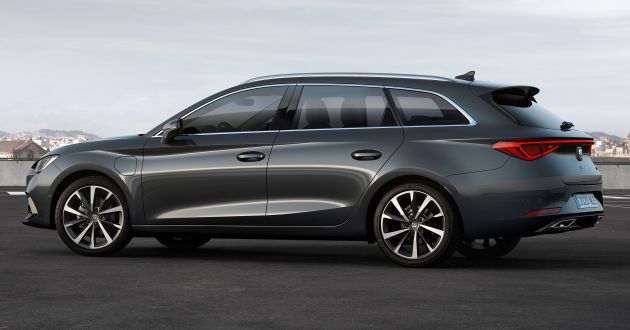
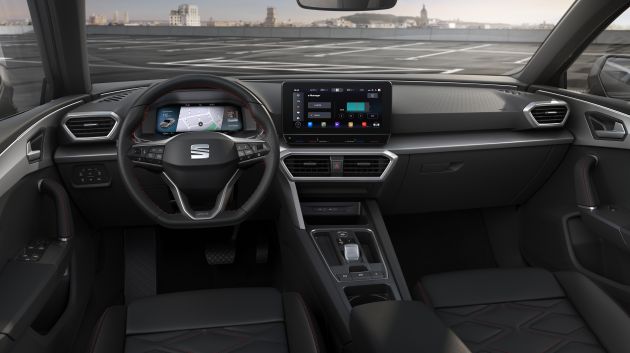


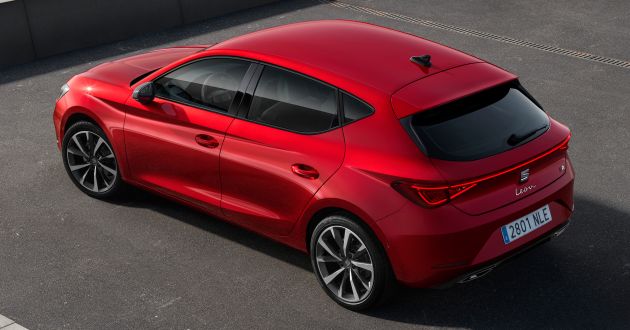

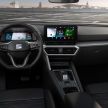
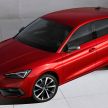
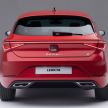
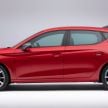
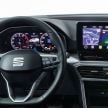

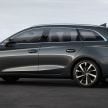
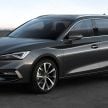
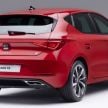

Once this brand becomes a scooter maker, how will current owners do servicing and finding spareparts Such a dilemma for SEAT, might as well buy a VW instead.
Such is the ignorance of people who have not researched SEATs market share in Europe, Mexico and Asia.
Ignorance like this?
https://paultan.org/2019/10/15/seat-may-rebrand-to-cupra-to-target-premium-market/
https://paultan.org/2019/11/11/seat-moves-into-two-wheeler-market-with-escooter/
I guess ignorant people will always fail to read.
Ignorant people conclude from headlines themselves instead of reading the full article and cross checking with other sources.
SEAT shares common parts among VW brands.
But will they service in a VW SC? No, because it’s not a VW. So how will they go about servicing?
You are welcome to send in continental car for servicing and minor repairs
damn….leon sportourer station wagon looks sick.
nailed the rear design and it doesnt looks like a coffin car.
wud definitely buy it if in msia
It looks like kia ceed and proceed